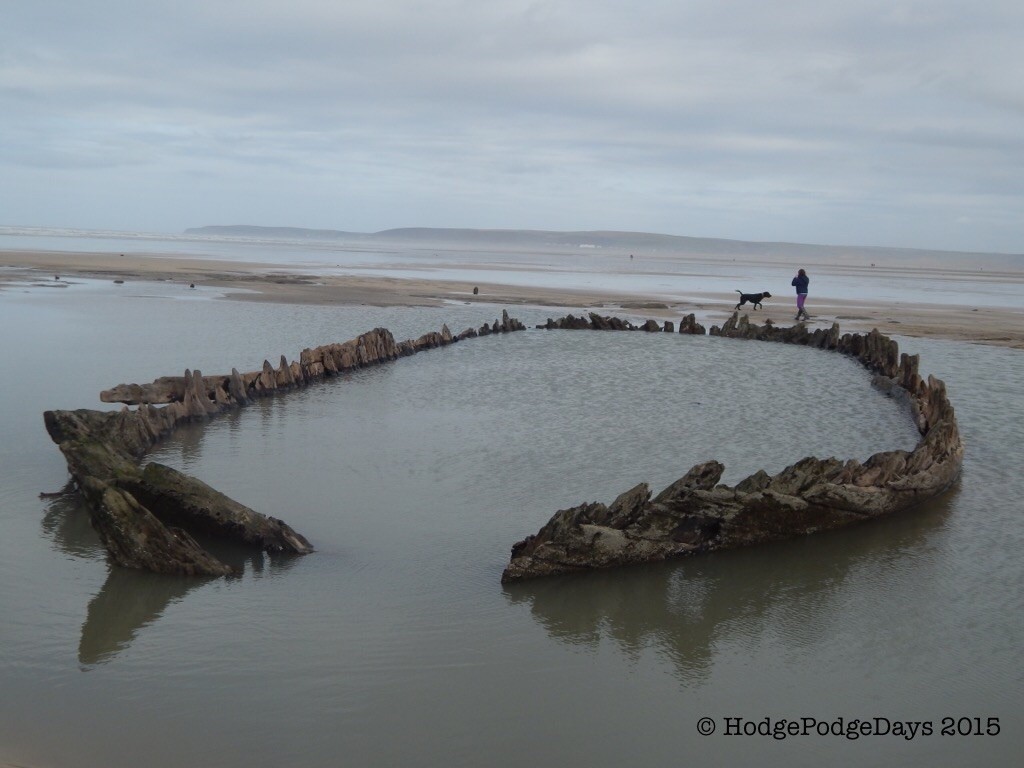We’ve been visiting the beach at Westward Ho! for many years. It’s a stunning beach, around two miles of lovely sand, popular with surfers and a great beach for collecting shells. Like most beaches on the North Devon coast its character can often be changed by the winter (and summer) storms; the fierce waves shifting the stones and sand, hiding and revealing features.
When we last visited Westward Ho! in June 2014 there was nothing of particular interest to note, it was the same as it’s always been, sandy and flat, with a bank of stones against the shore. In February 2015 it was at first glance the same. We took a stroll along the beach hoping to collect some nice shells to take back to school when I spotted some pieces of wood sticking out from the sand.
I was really curious about what they were and they seemed to be attracting attention, so we walked over to have a closer look. What we found was the ancient hull of what is thought to be a barge trading on the Bristol Channel, but has also known locally as a ‘Viking Ship’ or ‘Spanish Galleon’, we called it a ‘Pirate Ship’ because the small boy is currently obsessing about pirates.
The wreck is an oak-framed vessel which is around 25 metres long and 7 metres wide. It is thought that the wreck could be one of two boats wrecked nearby, the ‘Salisbury’ of London, lost in March 1759 on Northam Burrows or the ‘Sally’ of Bristol, which was wrecked on Northam Sands in September 1769.
This large wreck isn’t visible very often, so it was a real privilege to be able to see it. It’s usually buried deep in the sand and it might be a number of years before we get to see it again. I took the opportunity to take some pictures of it for prosperity.



A bit further along the beach we came across another wreck, this was much smaller than the first, measuring just over 15 metres in length. The remains of the wreck were not as complete as the first. This wreck is thought to date from the late 18th or early 19th century and is likely to be a Polacca Brig, a style of sailing boat which was used to trade limestone, coal and other goods across the North Devon coast, Taw Estuary and to the Bristol Channel.
Somewhere under Westward Ho! beach lies a third wreck, but that hadn’t been revealed to us by the shifting sands. We felt incredibly lucky to have seen the two skeleton wrecks which had been uncovered over the winter months and we’re hoping to visit again later in the year to see if they are still visible or not.
Note: All images are my own, they must not be used elsewhere without my written permission.
